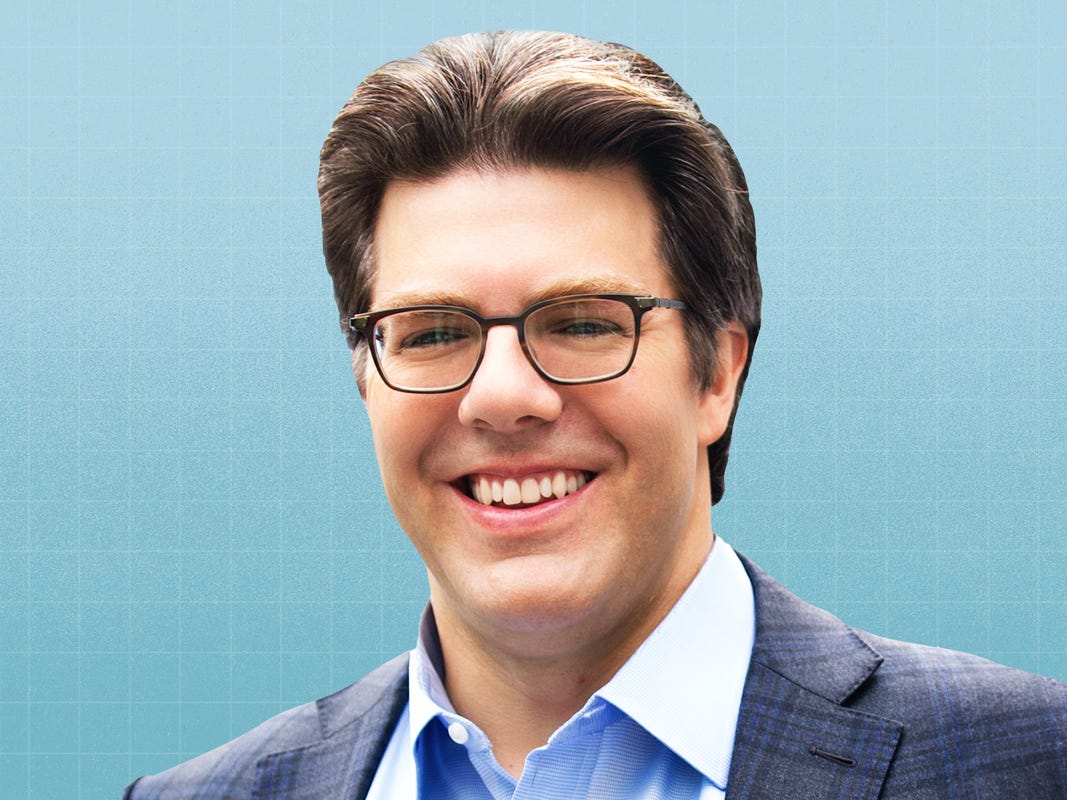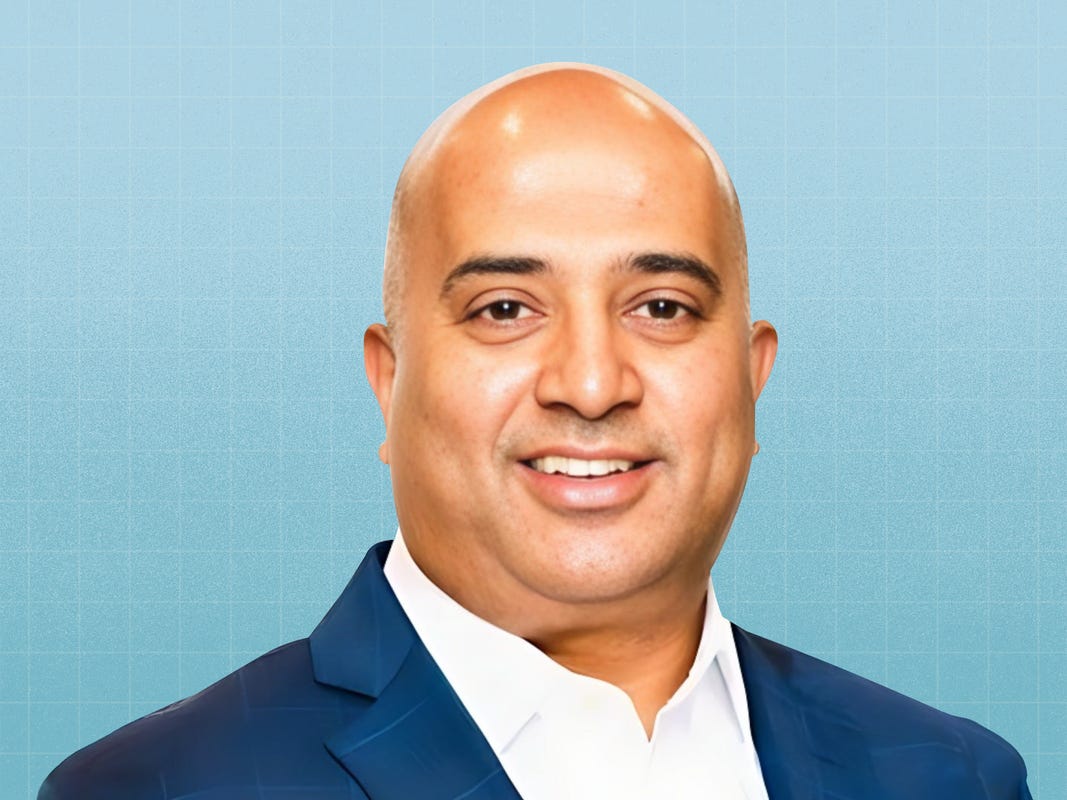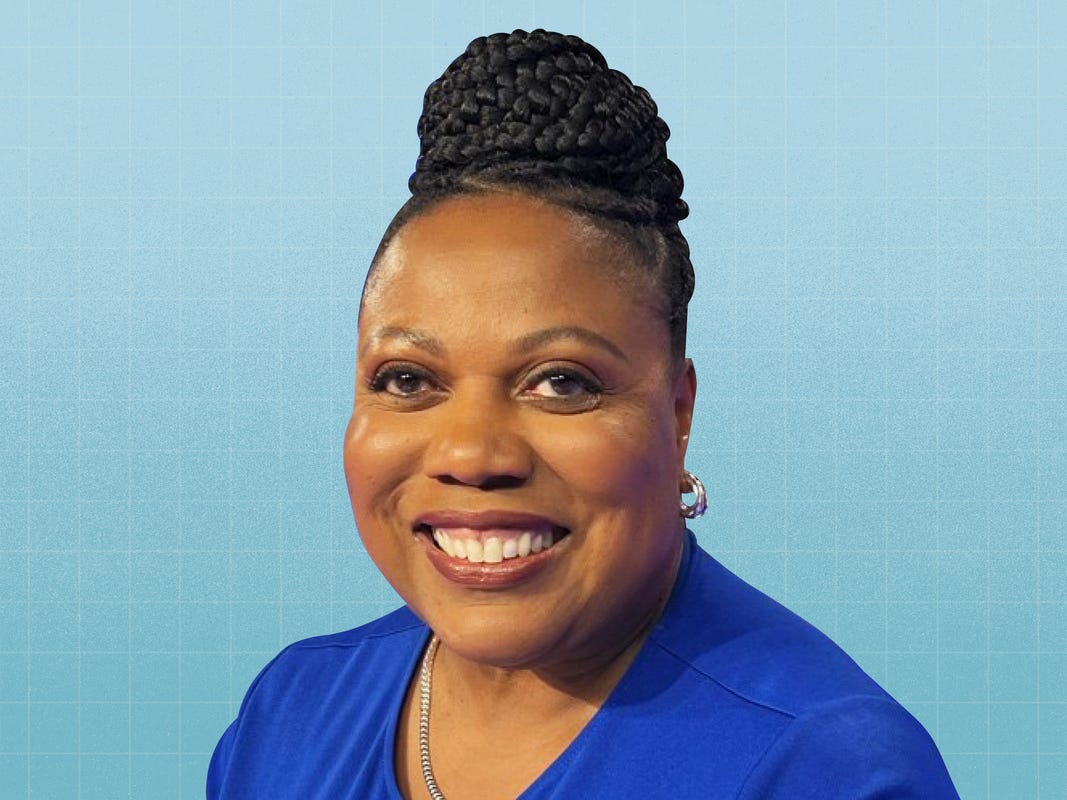Executives from 10 companies who are participants in our first-ever Workforce Innovation Board convened for a virtual roundtable on August 21.
The group was asked to share which topics they’re most focused on between AI, worker well-being, diversity, equity, and inclusion, and C-suite transformation.
While worker well-being and AI were the most commonly cited trends, there’s clear overlap and intersectionality across all four topics.
Successful employees need training and support, equitable and fair access to opportunities, and reassurances about the integration of AI. C-suite leaders, facing internal and external scrutiny and pressures, need a productive and motivated workforce, and to organize in new ways to enable innovation.
At the inflection point is the enormous job companies have to not only encourage AI adoption but also equip employees with what they need to take part in the transformation that is underway.
“There’s a positive story to be told,” said Jack Azagury, the group chief executive for consulting at Accenture. “Related to that is a massive amount of reskilling and training that’s going to need to happen to make sure nobody’s left behind on this journey.”
In this article, discover what each board member told us about their workplace priorities.
The following has been edited for length and clarity.
‘We’re trying to understand a more holistic view of worker well-being’
Shane Koller, senior vice president and chief people officer, Ancestry
The two topics we’re most focused on are worker well-being and DEI.
We transitioned to a hybrid-flexible work environment a couple of years back, and we’ve been trying to understand both the positives and the negatives from that shift. We’ve been a very culture-centric company in the past.
Now having more people distributed throughout the world, there’s a question coming up more often about whether or not people feel too disconnected from their colleagues, so we’re trying to understand a more holistic view of worker well-being.
The other is diversity, equity, and inclusion. We are looking to build products that bring more people in from across the globe. We believe our workforce needs to represent the diversity of the world in order to build great products.
Ancestry
Show less

Mastercard
Show less
‘The key to unlocking the potential of AI is to make sure that our employees are embracing it and are excited about the value’
Lucrecia Borgonovo, chief talent and organizational-effectiveness officer, Mastercard
Top of mind is C-suite innovation, but it’s more around organizational transformation.
Earlier this year, Mastercard announced changes in our organizational structure in support of the new vision and strategic priorities that our CEO has laid out: How do we make sure that we’re structuring to unlock the potential and growth of the organization?
Related to that is AI. As part of this new organizational structure, we announced our chief AI and data officer, one individual who would help bring together a cohesive strategy and vision for the organization’s AI.
The key to unlocking the potential of AI is to make sure that our employees are embracing it and are excited about the value these new technologies can have on their well-being and the quality of their work.
We’re making a lot of different resources available for employees, whether they’re on demand or self-paced, depending on where they are in their AI journey and the type of work that they do.
‘The intersection of AI and C-suite transformation is pervasive’
Jack Azagury, group chief executive for consulting, Accenture
In terms of the work that I do with clients, the intersection of AI and C-suite transformation is pervasive. In over 400 client discussions in the last nine months, only three did not include the topic of AI.
A lot of our clients have dozens of AI pilots everywhere. Very few have a coherent business case and a true reinvention and transformation.
So at that intersection, how do you take a few areas of the company and look at them end to end with a business case that could include revenue uplift, or cost, or employee engagement — but a real business case and a real talent strategy. How do you retrain your employees and reskill? What new jobs do you need? What jobs will go away? What superpowers will employees get? And then having the right tech stack, the right data, the right responsible AI framework.
So how do you have a holistic C-suite transformation powered by a move away from a lot of AI pilots that are just plugged into existing processes — which are interesting but not having a fundamental impact on the performance of the company?

Accenture
Show less

BCG
Show less
‘C-suite transformation is harder and more interesting than ever’
Alicia Pittman, global people-team chair, BCG
I’m responsible for driving generative-AI usage across BCG. We want our people to be at that cutting edge in terms of responsible AI and understanding all the risks of it, to use it creatively, and to be able to live in our clients’ shoes about what it takes to make this amazing technology have high impact.
AI is driving better, higher-quality impact and insights for us, which is most important. It is driving areas of productivity. But the other thing that lights me up the most is that it’s really improving what I would call joy.
One of the quotes I love is from focus groups where someone said, “The thing I love about AI is that it saves me at the ugliest hours of the day.” That time when you’re sitting at a blank screen toward the end of the day and you don’t know what to do, that’s when AI really is a friend.
C-suite transformation is harder and more interesting than ever. The markets are volatile. The half-life of market leadership keeps getting shorter and shorter. We have C-suite executives and the clients that we serve wrestling — needing to both save costs but also invest in AI and change the way they lead and manage their workforce.
‘AI is not about cost takeout. It’s about the ability to do more and amplify the potential of our employees.’
Anant Adya, executive vice president, service-offering head, and head of Americas delivery, Infosys
DEI, and within that, gender diversity, is something that we are very passionate about.
At the company level, we are at 39.3% women, but as you go up the value chain, the gender diversity actually drops. So we are deliberately trying to see what we can do to improve that percentage at senior levels.
The second is, of course, AI. And the way we look at AI is it’s not about cost takeout or cost savings, but it is about how we use AI and amplify the potential of our employees to do more.
Most think that with AI, you can take cost out, you can save money. But AI, and especially generative AI, is not about cost takeout. It’s about the ability to do more and amplify the potential of our employees.

Infosys Cobalt
Show less

AARP
Show less
‘Studies have shown that employees want managers who are engaged, who are coaches versus supervisors’
Marjorie Powell, chief human-resource officer and senior vice president, AARP
The topics we’ve been focusing on are workplace well-being and artificial intelligence and emerging tech. We have to reach our 38 million members, and now with the use of this technology, we can meet them where they are and personalize their experience.
In order for us to do this, we’re allowing our staff to use AI within their jobs and to create innovative ways to amplify their work and meet their goals and objectives. We’ve always been very excited about adopting technologies, particularly as it pertains to making people’s lives better as they age.
I also spend a lot of time on worker well-being because of the new hybrid work environment, and this goes to our people-leader effectiveness. Studies have shown that employees want managers who are engaged, who are coaches versus supervisors.
So we are transforming that leadership quotient for our people leaders within the company to be able to adjust to that and make sure that we have a very robust work environment, no matter where the person sits or where they work from.
‘We’ve had to move upstream from being focused on workplace to the very nature of work and the workforce itself’
Neil Murray, CEO, Work Dynamics at JLL
My day job is working with the biggest corporations in the world and helping them with their workplace strategy, which obviously has changed quite dramatically over the last number of years.
We’ve had to move upstream from being focused on workplace to the very nature of work and the workforce itself, hence worker well-being being at the center of what we do and our thinking. The second thing would be C-suite transformation. For me, that incorporates both AI and DEI.
Sitting on the executive board of a global Fortune 200 business, the world has changed quite dramatically for us in how we organize ourselves in terms of operating model. The skills required have changed quite dramatically. The notion of empathetic leaders who deeply understand people but also have the skills to leverage platforms at scale, to deal with ongoing geopolitical tensions and macro challenges that seem to have become the norm in leadership.
What doesn’t serve us well is the notion of the rise of nationalism and protectionism — how do we deal with that? How do we find the balance between global vertical expertise with the local knowledge and execution required to operate in this world around us?

Work Dynamics at JLL
Show less

Indeed
Show less
‘We have made significant commitments to responsible AI’
Maggie Hulce, chief revenue officer, Indeed
Every three seconds, somebody gets a job on Indeed. We come at this with a focus on how we help our employees but also how we’re helping the world of work.
For AI, we’re thinking a lot about how to improve how we work, fraud detection, next best action marketing copy, many things like that. We also have a commitment to help 30 million people facing bias get hired. And so we have made significant commitments to responsible AI and have published our responsible-AI principles.
A big focus for us is worker well-being. We have a work-happiness score, which is the largest dataset in the world of what makes workers happy in their roles. It includes lots of different dimensions, like fair pay, flexibility, inclusion, learning, and how your manager works with you.
We think a lot about how to use this dataset to help advocate for better work for people, given research that shows many people don’t love their jobs and are not totally thriving at work. We also study it for ourselves, and there are things we’re working on ourselves as an employer to make our workplace a place where people want to stay and grow their careers.
‘There’s a constant discussion around not only whether AI is going to replace my role but also how to stay relevant’
Kenon Chen, executive vice president of strategy and growth, Clear Capital
There’s been a lot of attention on the property-appraisal industry over the past few years from an equity standpoint.
We’ve seen ourselves as a company that wants to bring accuracy, fairness, and modernization to the process of valuing properties. That’s why AI is an important topic for us because it’s not so much about just creating efficiencies; it’s about creating more accurate outcomes and results.
We see a really strong tie between AI and worker well-being because a lot of the solutions that AI could be appropriate for have an impact on the way that people work and how their jobs might look.
Because we work directly with real-estate professionals — appraisers, real-estate brokers, and agents — there’s a constant discussion around not only whether AI is going to replace my role but also how to stay relevant to the process and bring what’s needed in terms of human expertise.

Clear Capital
Show less

LiveRamp
Show less
‘The hybrid work environment has really changed how our leaders show up’
Sharawn Tipton, chief people and culture officer, LiveRamp
C-suite transformation is a very intentional focus for us, and there’s certainly opportunity.
So it’s about developing those leaders, holding them accountable — not just to our objectives but also to their behaviors — and grooming the next level of leadership as well. The hybrid work environment has really changed how our leaders show up and how we develop them in various areas.
The other area that is extremely important around product is artificial intelligence. AI will fuel data collaboration, which is what we do, so we are infusing that into our products. I’m also thinking about how we infuse that into our employees’ day-to-day work. There’s a lot of complexity there.
There’s also a conversation that needs to be had around how AI will impact underrepresented groups and do they have the skills necessary to operate in that space.
Read the full article here
















